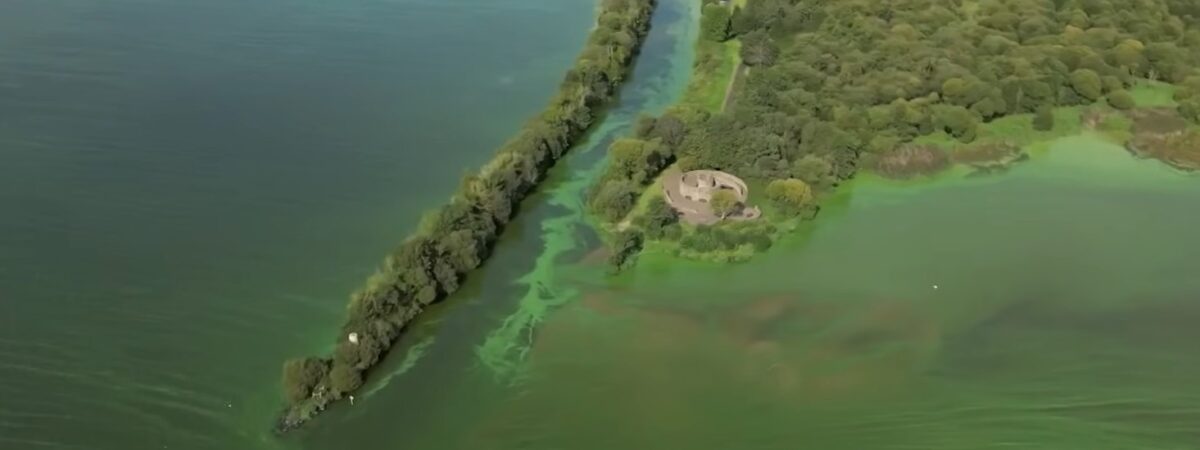
It’s a real ecological disaster. Lough Neagh, Ireland’s largest lake, is said to have turned into a kind of green mud, appearing partially solidified. The once-beautiful water of this Irish lake is said to have turned into a thick green mashed potato, complicating all forms of navigation and causing one of the greatest ecological disasters the island of Ireland has ever seen.
In Northern Ireland, the situation is worrying. The lake at Lough Neagh has been transformed into a strange fluorescent green mass. Everywhere you look, a toxic green seems to have taken hold of its waters…
The cause: blue-green algae, which literally transformed the lake, turning it into a kind of impassable marshy mud.
It all began last August, when Denise Johnston, an elected member of the Social Democratic and Labour Party (SDPL) in Northern Ireland, decided to post a video of Lough Neagh, visibly transformed. We then see a boat, struggling to make its way across the lake…
A fisherman from Randalstown plunges his oar into the lake, showing shocking images: the lake appears to have solidified. Its water is now lumpy and viscous, as if frozen. Blue-green algae seem to have taken over the lake, turning it into a disgusting flan…
This was taken yesterday at a fisherman’s quay outside Randalstown. It’s a real shame to see this and it appears to be down to an infestation of zebra mussel. Amongst other things they are clearing the water which has led to unprecedented growth in the algae. pic.twitter.com/YJZrG1Clcb
— Cllr DENISE JOHNSTON (@DENISEJOHNSTO10) August 3, 2023
According to the people broadcasting these images, this is Lough Neagh, an Irish lake that has become “the recent target of climate change”.
Since then, the video has gone viral and the whole world is concerned about the transformation of this Irish lake, considered the third largest in Europe (after Lake Geneva and Lake Constance).
However, certain nuances need to be taken into account. The video was apparently recorded on the north shore of Lough Neagh. After investigation, it would appear that the blue-green algae contamination is confined to the shores of the lake. At the time of writing, this would also apply to the center, but to a lesser extent.
However, the situation on the riverbanks continues to give cause for concern. It is directly linked to pollution and climate change. The abnormally high temperatures of recent weeks are thought to have contributed to the proliferation of blue-green algae (cyanobacteria).
Add to this agricultural discharges and sewage, and we have an explosive cocktail, endangering one of the country’s most beautiful lakes.
The consequences are already dramatic: boats can no longer make headway on the lake. Fish can no longer survive in water contaminated with nitrates and phosphates. The green mud parasitizes their scales and gills, preventing them from moving and breathing properly.
As for the birds, they get poisoned around the lake. There have been several reports of corpses being found around the riverbanks.
And it’s not just flora and fauna that are affected. The people of Northern Ireland are bearing the full brunt of the lake’s alteration. Lough Neagh has always been Northern Ireland’s drinking water reservoir. The lake supplies up to 40% of the water needs of the population of Northern Ireland.
This blue-green algae contamination raises major public health issues.
For the time being, researchers and environmental specialists are working hard to find a solution that will save the lake and restore its balance… But the pollution of Lough Neagh remains only a symptom of a large-scale problem.
CO2 emissions on a global scale, coupled with human irresponsibility, risk compromising a fragile balance and endangering some of the planet’s most beautiful places. Unfortunately, Ireland is one of its direct victims.